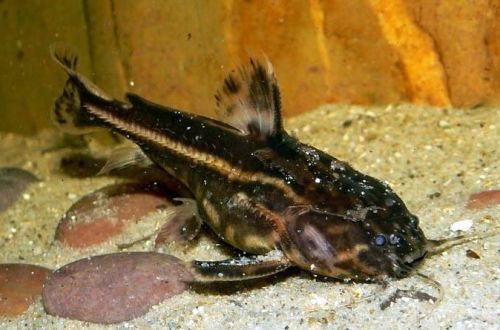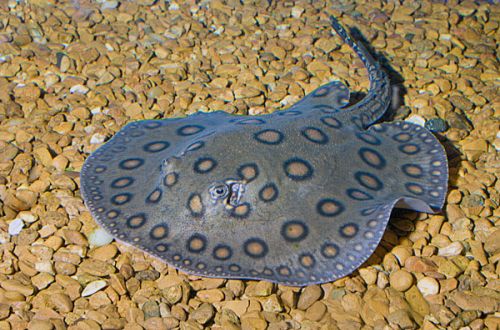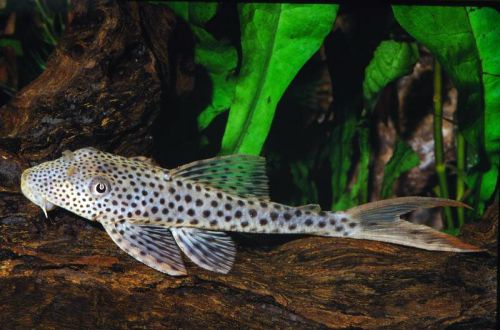
Acantodoras chocolate
Acantodoras chocolate or Chocolate talking catfish, scientific name Acanthodoras cataphractus, belongs to the family Doradidae (Armored). Another common name is prickly catfish. A rare guest in a home aquarium. It is generally exported as by-catch to a consignment of related Platidoras species.

Contents
Habitat
Comes from South America. Inhabits numerous rivers in Guyana, Suriname and French Guiana, which flow into the Atlantic Ocean. Found in small tributaries, streams, backwaters, freshwater and brackish marshes, coastal mangroves. In the daytime, catfish hide on the bottom among snags and aquatic vegetation, and at night they swim out of their shelters in search of food.
Brief information:
- The volume of the aquarium – from 100 liters.
- Temperature – 22-28°C
- Value pH — 6.0–7.6
- Water hardness – 4–26 dGH
- Substrate type – sandy
- Lighting – subdued
- Brackish water is permissible in a concentration of 15 g of salt per liter
- Water movement – little or no
- The size of the fish is up to 11 cm.
- Food – any sinking food
- Temperament – peaceful
- Content in a group of 3-4 individuals
Description
Adults reach a length of up to 11 cm. The color is brown with a light stripe along the lateral line. The fish has a massive head and a full belly. The massive first rays of the pectoral and dorsal fin are sharp spikes. The rigid body is also dotted with small spines. Sex differences are minor. Females look somewhat larger than males.
The bone plates on the head can make a sound when rubbed, so this group of catfish was called “speaking”.
Food
An omnivorous species, it will eat anything that gets into its mouth, including inattentive small fish. The home aquarium will accept most popular sinking foods in the form of flakes, pellets, supplemented with live or frozen brine shrimp, daphnia, bloodworms, etc.
Maintenance and care, arrangement of the aquarium
The optimal size of the aquarium for a group of 3-4 fish starts from 100 liters. Spiny catfish prefers dim lighting and needs reliable shelters, which can be both natural elements (snags, thickets of plants) and decorative objects (caves, grottoes, etc.). sandy soil.
The fish are able to adapt to a wide range of hydrochemical values, including brackish water with a low salt concentration (up to 15 g per liter). Long-term maintenance is possible only in stable water conditions, sharp fluctuations in pH and dGH, temperature, as well as the accumulation of organic waste should not be allowed. Regular cleaning of the aquarium along with the placement of the necessary equipment will guarantee clean water.
Behavior and Compatibility
Non-aggressive calm fish, preferring to be in a group of at least 3-4 individuals. Compatible with other Amazon species of medium to large size. Reliable protection will allow keeping together with some predators.
Breeding / breeding
At the time of writing, very little reliable information about the reproduction of Chocolate Talking Catfish has been collected. Probably, with the onset of the mating season, they form temporary male/female pairs. Caviar is laid in a pre-dug hole and the clutch is guarded during the incubation period (4–5 days). Whether care continues for the offspring that has appeared is unknown. Do not breed in home aquariums.
Fish diseases
Being in favorable conditions is rarely accompanied by a deterioration in the health of fish. The occurrence of a particular disease will indicate problems in the content: dirty water, poor quality food, injuries, etc. As a rule, eliminating the cause leads to recovery, however, sometimes you will have to take medication. Read more about symptoms and treatments in the Aquarium Fish Diseases section.





